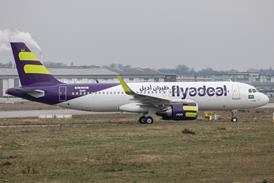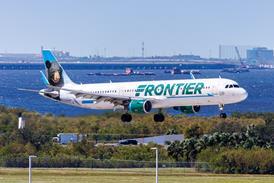The UK has been bold in its aircraft carrier decision and should seize the opportunity to develop a fully capable force projection capability
Last week's decision by the UK to select the short-take-off and vertical landing (STOVL) variant of the Lockheed Martin F-35 Joint Strike Fighter (JSF) over the US Navy's CV aircraft carrier version was awaited with keen anticipation. The decision to order a "future proofed" aircraft carrier shows signs of clear and rational thinking, something often missing from military procurement decisions.
Deciding between STOVL and CV JSFs to meet the Royal Air Force/Royal Navy Joint Combat Aircraft requirement was a key decision that influenced CVF aircraft carrier size, which has in turn had a knock-on effect on programmes such as MAS, the RN's future carrier-borne airborne early warning (AEW) platform. In short, operating the STOVL JSF would allow use of a smaller CVF, but would restrict MAS to a helicopter, almost certainly the AgustaWestland EH101/Merlin, or the Bell Boeing V-22 Osprey, either of which would impose operational limitations. The CV carrier would be a less flexible asset, but able to operate fixed-wing AEW aircraft, the Northrop Grumman E-2 Hawkeye, and possibly tankers, as organic capabilities.
The decision to select the STOVL aircraft has industrial implications: Rolls-Royce is the driving force behind the vertical lift system, and the central plank of its business plan is the JSF, both the lift system and R-R's participation in development of the General Electric F136 alternative engine. The UK is also sticking with what it knows best. The RAF has over 30 years' experience of operating various versions of the Harrier, while the RN has operated the Sea Harrier since the late 1970s. As the chief of the air staff, Air Chief Marshal Sir Peter Squire, says, this probably makes the UK the "fleet leader" in STOVL operations.
STOVL also provides operational benefits, including the ability to operate when the sea is too rough for conventional flying. While it may have become clichéd, the RAF/RN has demonstrated that when "landing-on" it is preferable to stop and land rather than land and stop. This makes it easier and quicker to work up pilots to embark at sea, as the RAF/RN Joint Force Harrier has demonstrated. It takes time and practice to routinely land on board a traditional aircraft carrier, a skill quickly lost without regularly training.
Depending on your point of view, however, the UK's CVF decision is either a brave attempt to get best value for money, or the wobbliest of decision making.
The MoD says it selected the CV carrier as it "future proofs" the two ships which may be in service for 50 years, operating with the generation beyond JSF - which may not have a STOVL capability - in later life. This in itself is perhaps a controversial position: there are many who are willing to predict that the JSF will be the last manned fighter. Alternatively, the MoD may be concerned that the US Marine Corps - the main customer for the STOVL F-35, with plans to order 609 against the UK's 150 - will change its mind about the aircraft, or the vertical lift system is not considered sufficiently mature to guarantee service entry. With the large CVF approach the carrier can be converted to conventional carrier operations before service entry. Conversely, it can be argued that the MoD is unsure of its direction, thinking or decision-making process and it is hedging its bets. After all, the first CVF is still 10 years from entering RN service.
Whatever the logic behind selecting the marginally bigger ship, it provides the UK's defence planners with a fantastic opportunity to develop a real force projection capability. By moving from the proposed "fitted for, but not with" catapults, arrestor gear and the other paraphernalia of CV operations, to a carrier fitted for CV operations, MAS can be a fixed-wing aircraft, flying higher, for longer and therefore providing a better air and sea picture. Once the "cats and traps" are in-place it becomes possible to consider other organic capabilities. Lockheed Martin, for instance, has proposed an EF-35 electronic-warfare aircraft based on the CV JSF. Tankers become an option, and by the middle years of the next decade it may be possible to integrate a combined AEW/air-to-ground surveillance capability in the same Hawkeye-size airframe, providing yet another capability.
These may all be flights of fantasy; all these capabilities will, of course, cost money. But there is little doubt that the RAF and RN have started down a road to create a standalone and realistic power projection capability. It would be a shame to lose that just because today's bold move is blinded by concerns for the needs of 2062.
Source: Flight International























